Bears are among the largest mammals and rule the top of the food chain in forests around the world. Many people are scared to encounter a bear when they are hiking or camping in the woods. However, these concerns are much overblown.
Grizzly bears attacks are sensationalized but only happen extremely rarely. For example, out of 104 million visitors to Yellowstone national park from 1980-2015, 38 were injured by grizzly bears. There is a common perception that bears are these voracious carnivores and stalk through the forest hunting for deer and other large prey as their main food.
Although bears are often classified as carnivores, their diet is actually mostly composed of plants. Not so exciting, right? When they do eat meat, it’s usually already dead or a very small mammal like a rabbit or mouse.
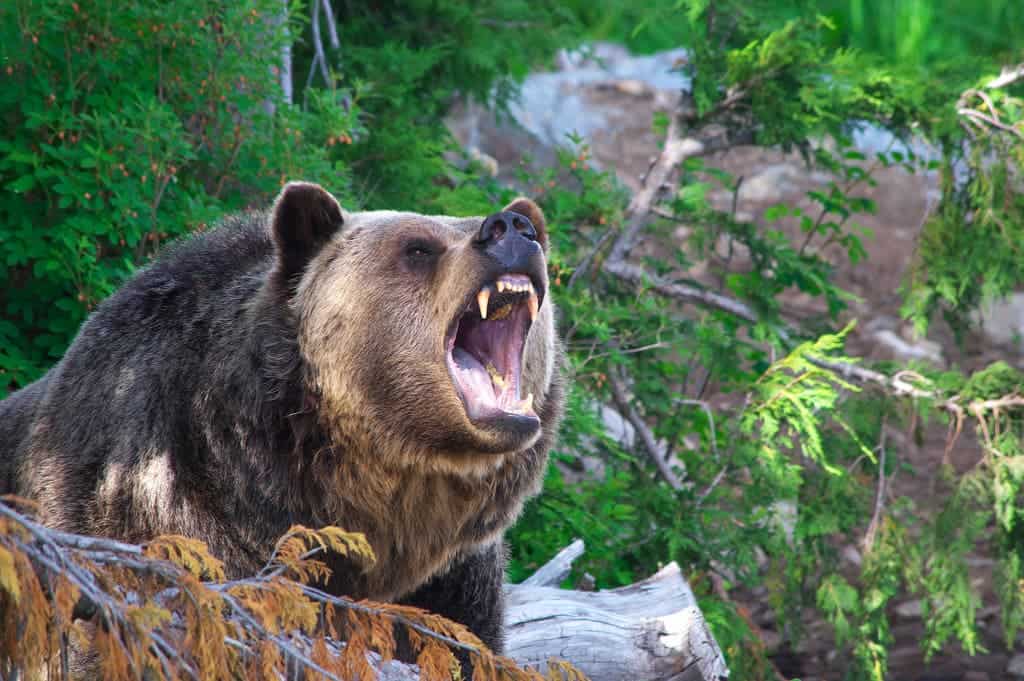
At least 85% of a bear’s diet is made up of plants. So they are not really carnivores, and even barely omnivores (the only exception is the polar bear).
Black bears (Ursus americanus) in North America and brown bears (Ursus arctos) in North America and Eurasia are the most common bears worldwide. In the spring when emerging from torpor, the bears dig for roots and eat new plant shoots. For protein, they scavenge for dead deer that didn’t survive the winter and they may kill fawns. For protein supplements they eat insects; they target mostly social insects because there are large amounts of them in one place. In the summer, the bears mostly eat berries and fruit because they provide a lot of energy. In the fall, bears eat many kilograms of nuts, roots, and bulbs a day to bulk up for the winter.
However, the diets of bears vary depending on their region. In warmer areas of Eurasia, more than 90% of their diet could be plant-based. In drier areas, such as the sub-arctic, bears may eat substantially more meat (up to half of their diet). There’s a lack of plant species in dry locations, so bears eat more deer or caribou to make up for that. Usually, most of the mammals that they consume are under 10 kg (22 pounds), like rabbits and mice.
Occasionally bears have been known to hunt adult deer, but this happens extremely rarely. Even rarer are cases of bears ambushing adult moose. In the Pacific coast area, bears fish for salmon, and can catch other fish.
Bears are only dangerous to humans when an unnatural relationship is established between them, such as when humans feed bears. This behavior causes bears to lose their fear of humans and not be afraid to approach.
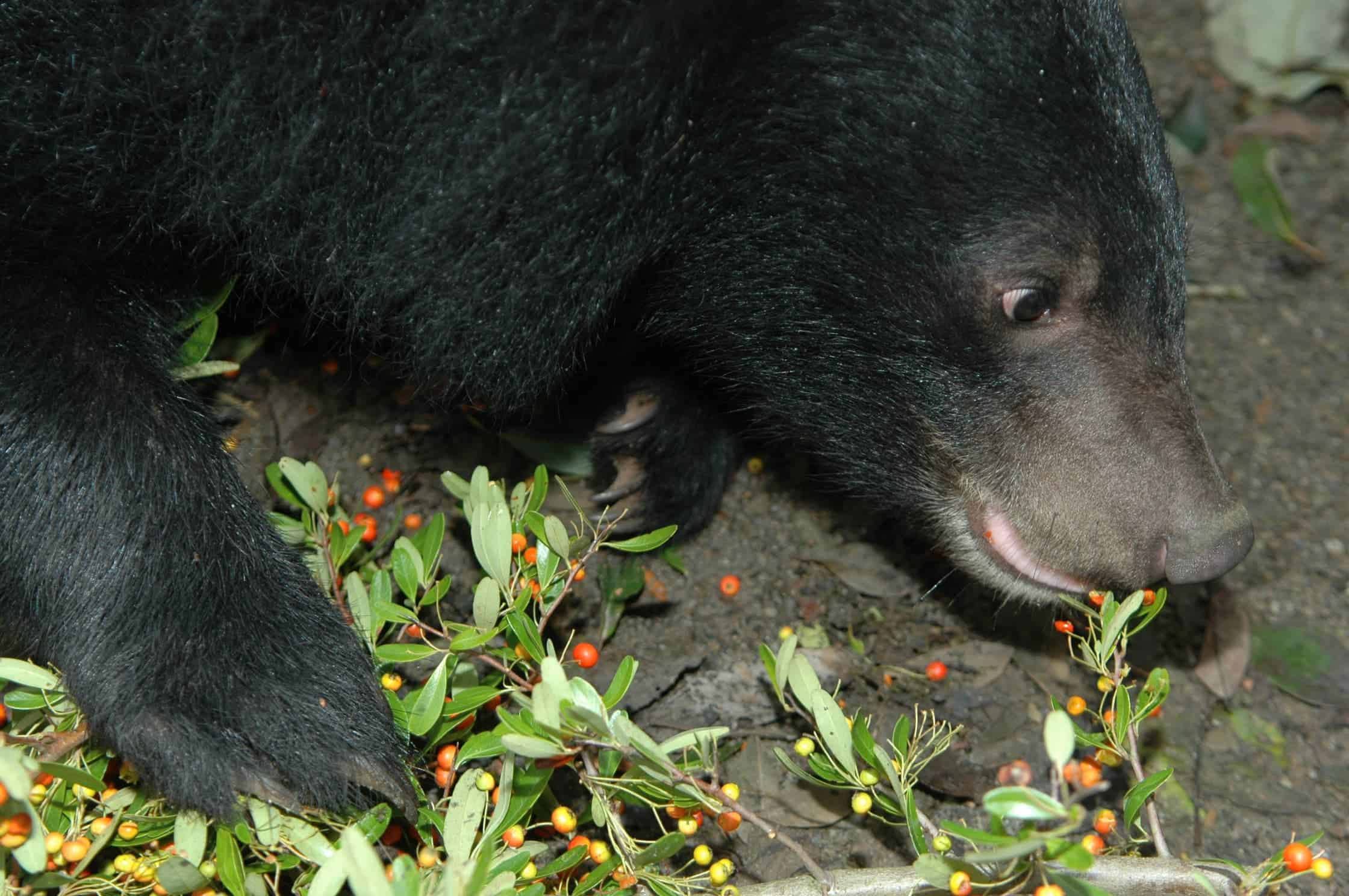
The other bear species around the world
Asiatic black bears (Selenarctos thibetanus)
Found in: Iran to south-east Asia
Diet: Asiatic black bears eat mostly grasses, fruit, berries, seeds, honey, and nuts. For protein, they munch on small vertebrates, insects, and carrion.
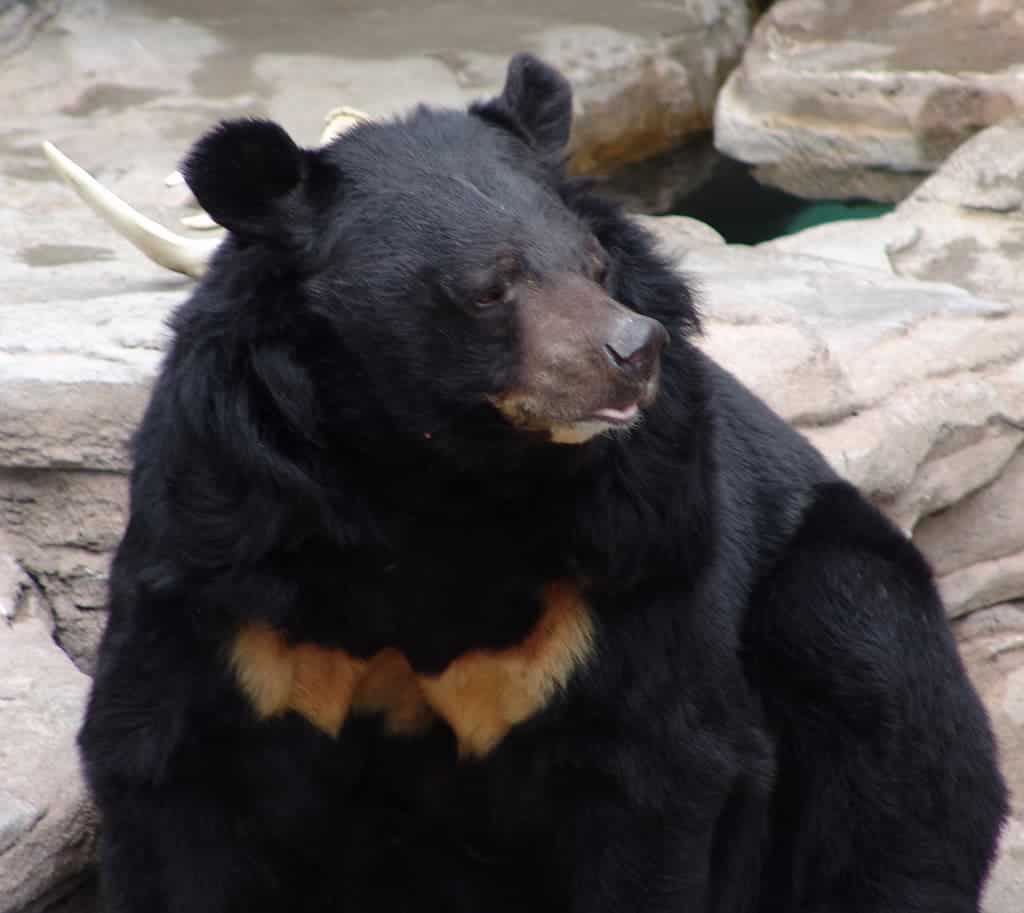
Giant panda (Ailuropoda melanoluca)
Found in: fragmented mountain ranges in Western China
Diet: Pandas have a diet that is comprised of 99% bamboo, of which they eat 12-38 kg a day to meet their energy needs. On rare occasions, they eat other plants and small rodents or pikas.
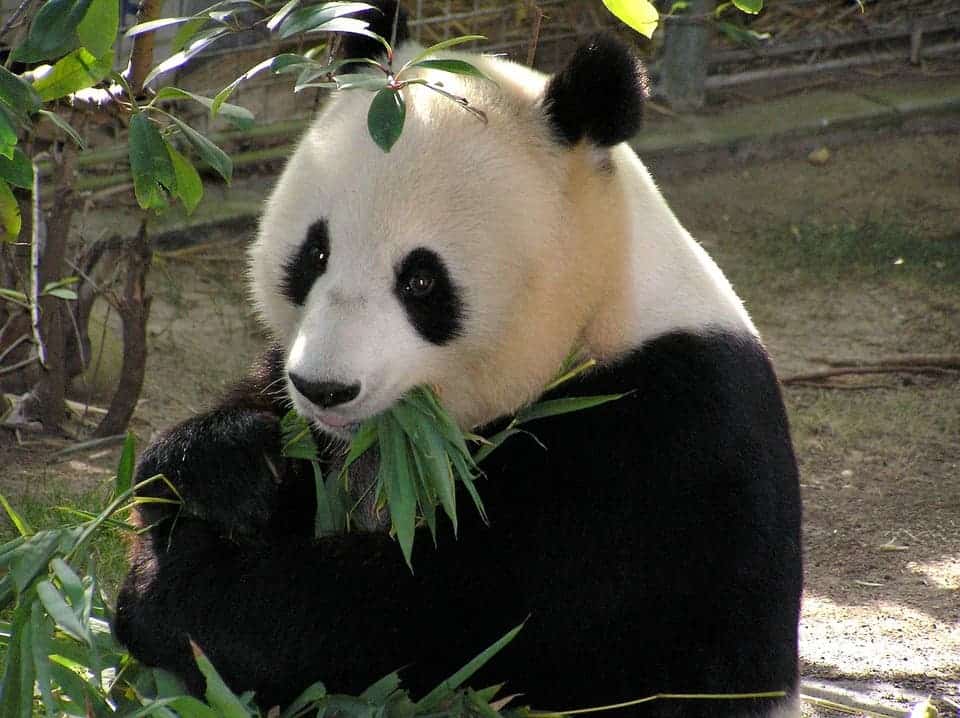
Andean bears (Tremarctos ornatus)
Found in: the Andes in South America
Diet: Andean bears are similar to pandas in that their diet is 95% plant-based. They mostly eat fruit, bromeliads, palms, and cacti. They also indulge in insects and rodents.
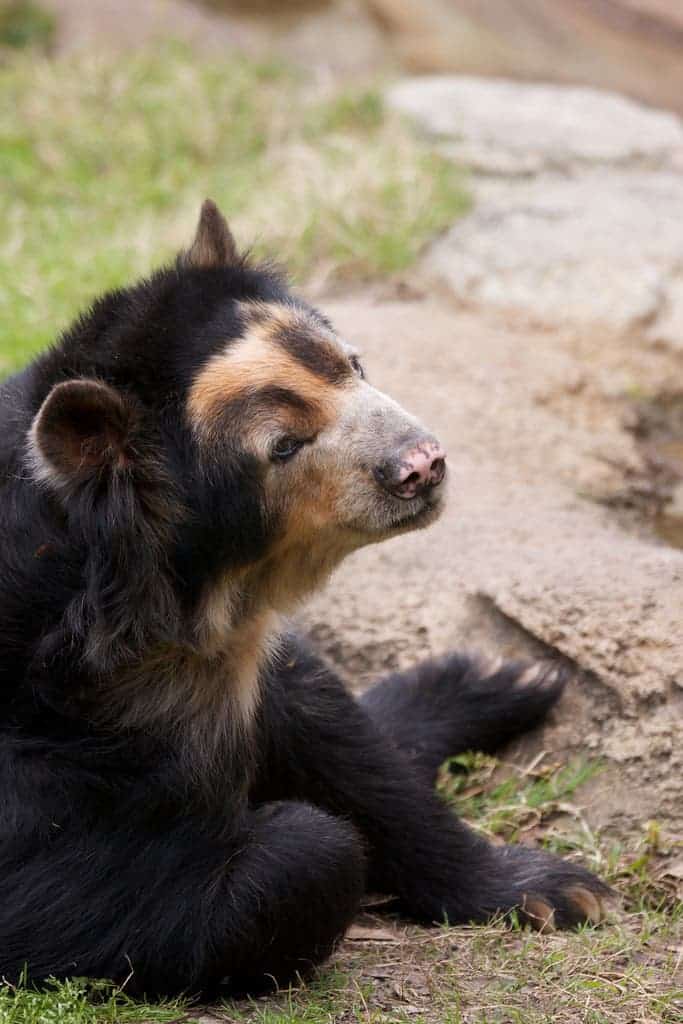
Sloth bears (Melursus ursinus)
Found in: India, Sri Lanka, Bangladesh
Diet: Sloth bears eat mostly ants, termites, and fruit. They eat more fruit during the growing season and a majority of insects during the rest of the year.

Sun bear (Helarctos malayanus)
Found in: Southeast Asia
Diet: Sun bears eat almost anything that they can find in the rainforest. This includes bees, honey, insects, fruit, birds, eggs, reptiles, deer, and small mammals.
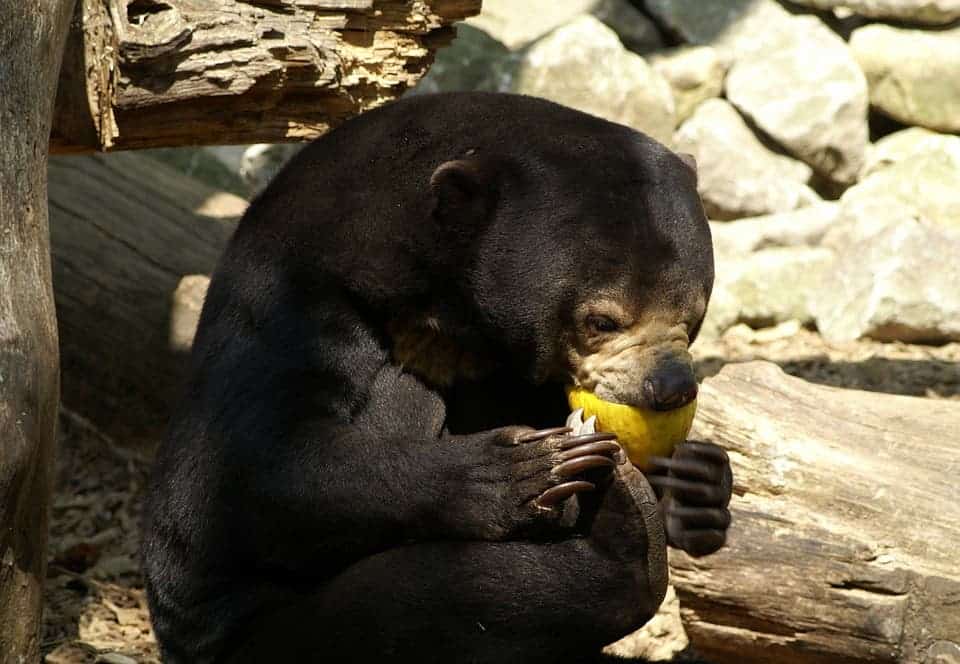
Polar bear (Ursus maritimus)
Found in: the whole Arctic
Diet: The only exception! Because there are very few plants growing in the Arctic, polar bears rely almost exclusively on seal fat for food. Some food alternatives are reindeer, rodents, kelp, birds, and berries.
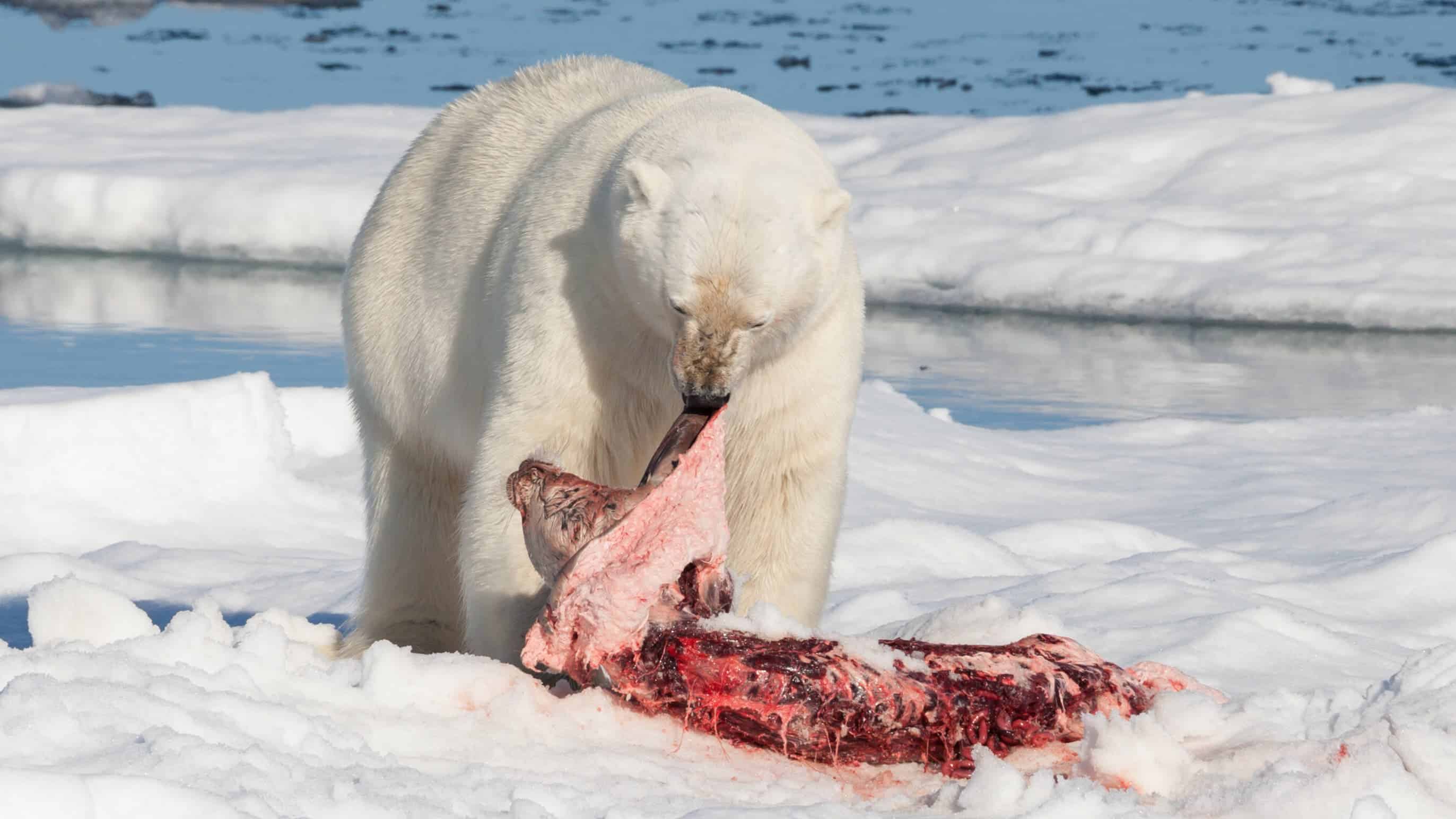
Most bears don’t actively hunt very much and follow a mostly plant-based diet. Only bears that live in areas without much vegetation, like the arctic or sub-arctic, hunt for more meat. These bears don’t have much contact with humans because these areas are scarcely populated. The chances of being attacked by a bear are low, but it is still important to take necessary precautions in areas known to have bears.


